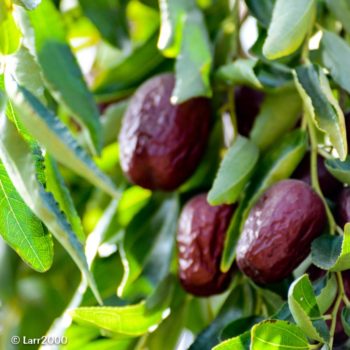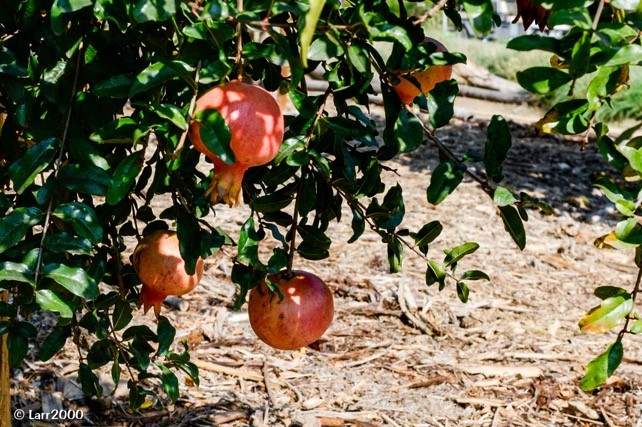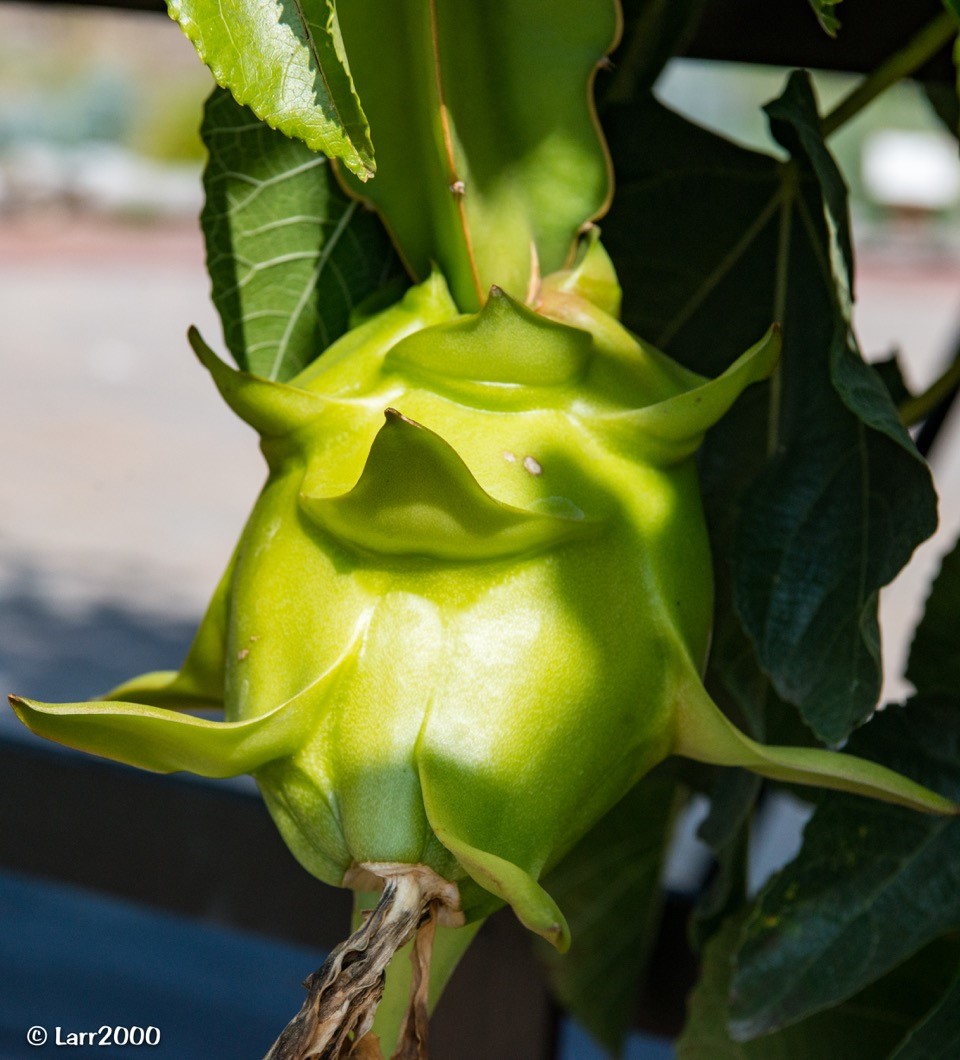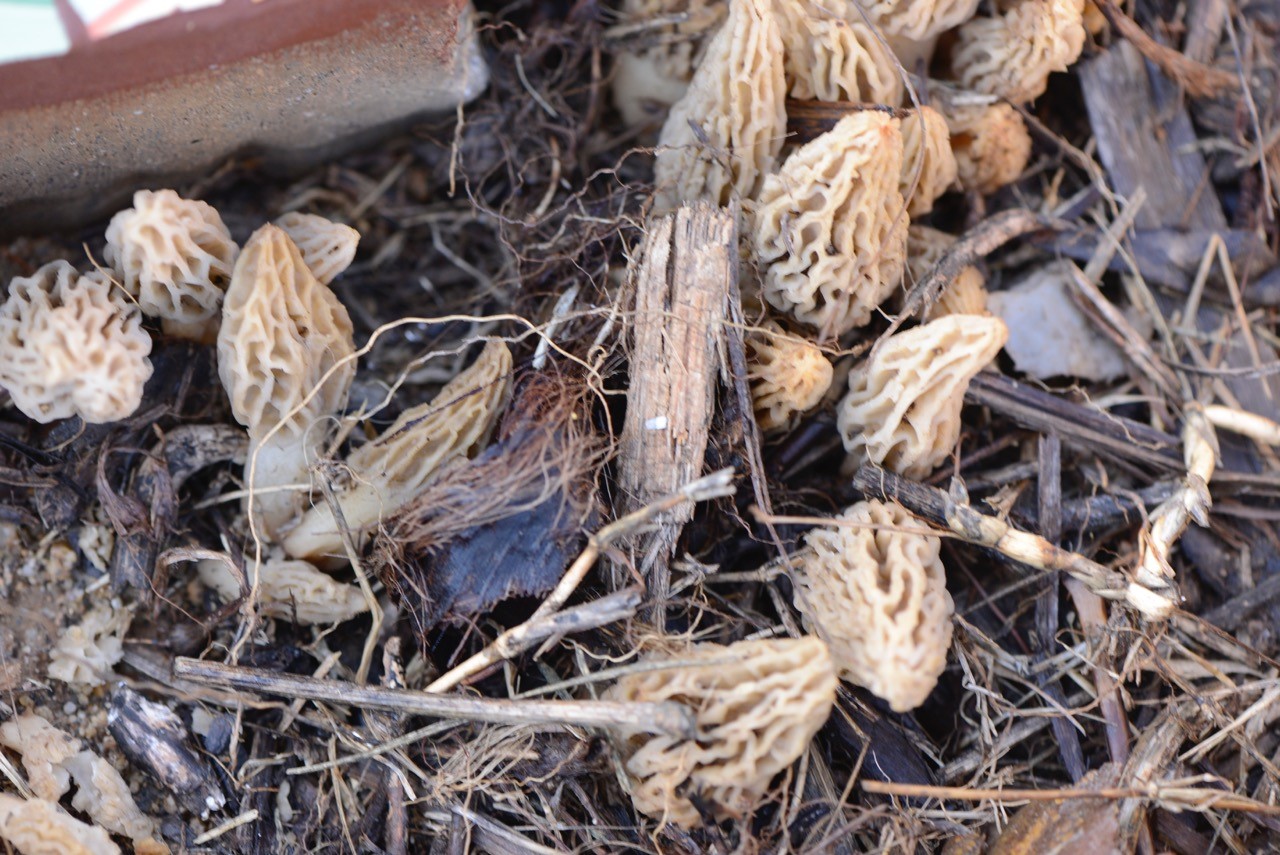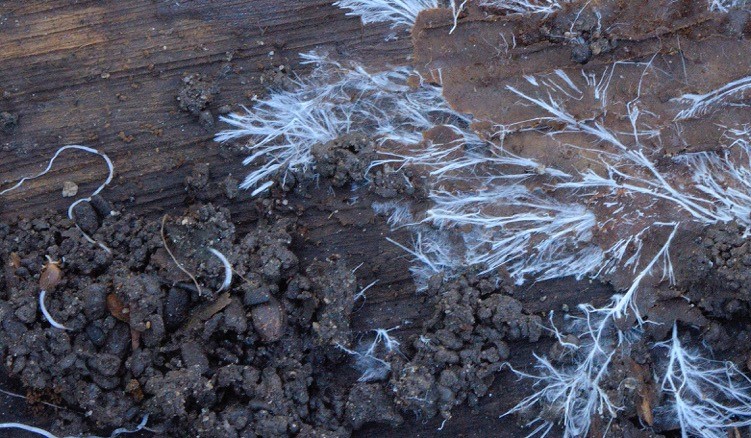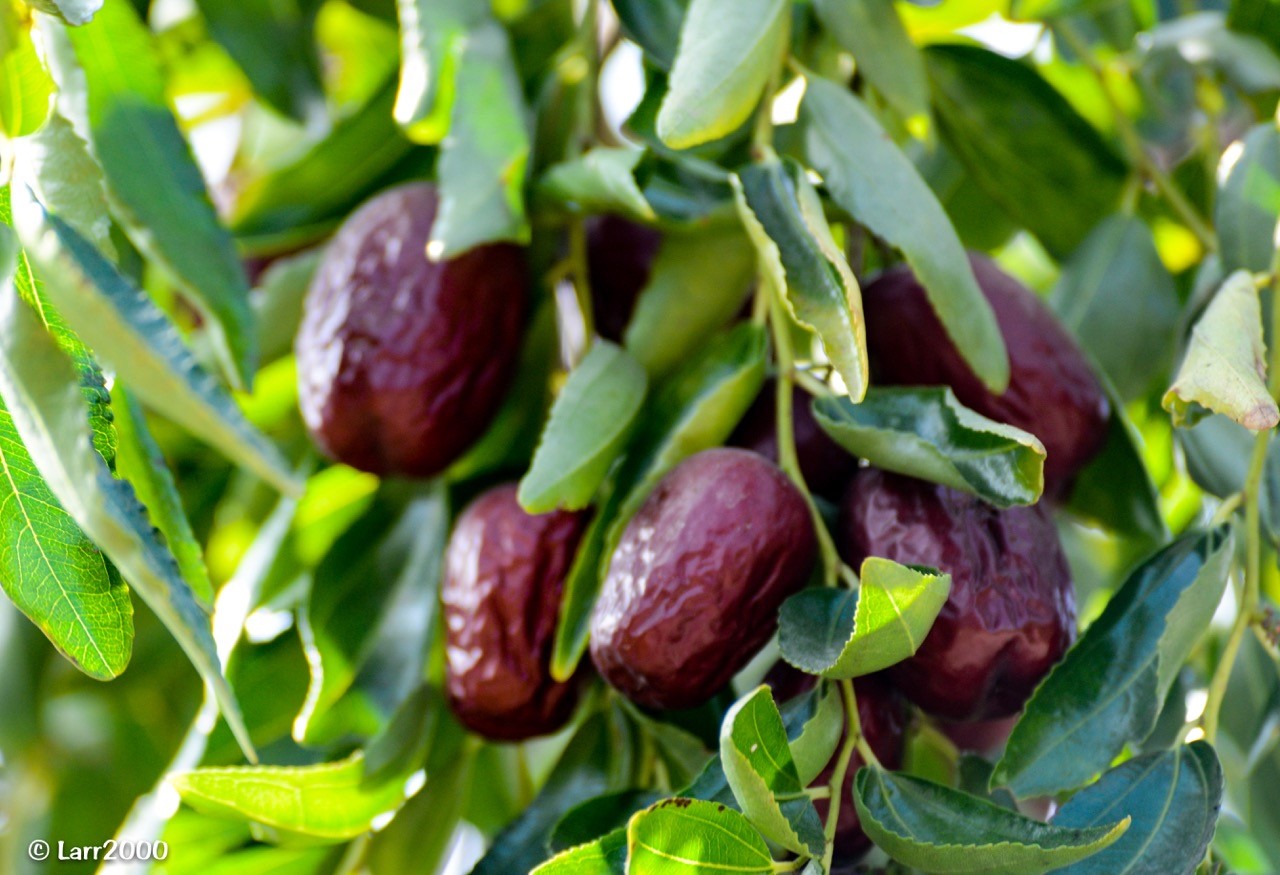Hard to believe that while the East Coast was hammered with disastrous rains recently, Southern California is still enduring a drought.
But one woman is proving we can use our water better and grow food sustainably despite the drought. Her name is Leigh Adams, and at the L.A. County Arboretum, where she’s a horticulturist, she runs a big garden called Crescent Farm. It produces a bounty of fruits and nuts, with very little extra irrigation, even though L.A. only gets about 8 inches of rain a year.
When Rico visited the arboretum — which by the way also boasts a flock of roaming peacocks — Leigh explained a few of her techniques, some of which she said a child could grasp.

Leigh Adams: When you were a kid, you rolled over a log, and you knew that, underneath, it would be…
Rico Gagliano: Moist.
Leigh Adams: Yes! If you’re putting logs in your garden, you’re capturing water. The same principle that occurs if you have a cold beer on a hot day: the moist air condenses out on the cooler, denser surface of the vessel you’re drinking from. That’s what occurs around stones and logs, but the logs have the ability to absorb that water and hold onto it.
Rico Gagliano: Which is why I’m looking around here, and I see it is true. I thought it was merely decorative, but you’ve got a ton of logs lying around in this garden.
Leigh Adams: And way beyond, way beyond that, that mound down there, there are large logs that came down in a record storm five years ago that are underneath that mound, and they’re covered over with soil.
Rico Gagliano: So, you’re also burying logs to capture water.
Leigh Adams: Yes! And they’re very effective. We grew a crop of squash up there without watering it in this record drought.
Rico Gagliano: How do we translate that to our personal gardens? We should just put logs all over the place?
Leigh Adams: Excellent! We should! We should have logs, and we should use layered planting, so that we have a canopy effect. A tree, not sitting in isolation in the middle of the lawn, but a tree surrounded by shrubs surrounded by lower growth, so that we mimic forest ecology.
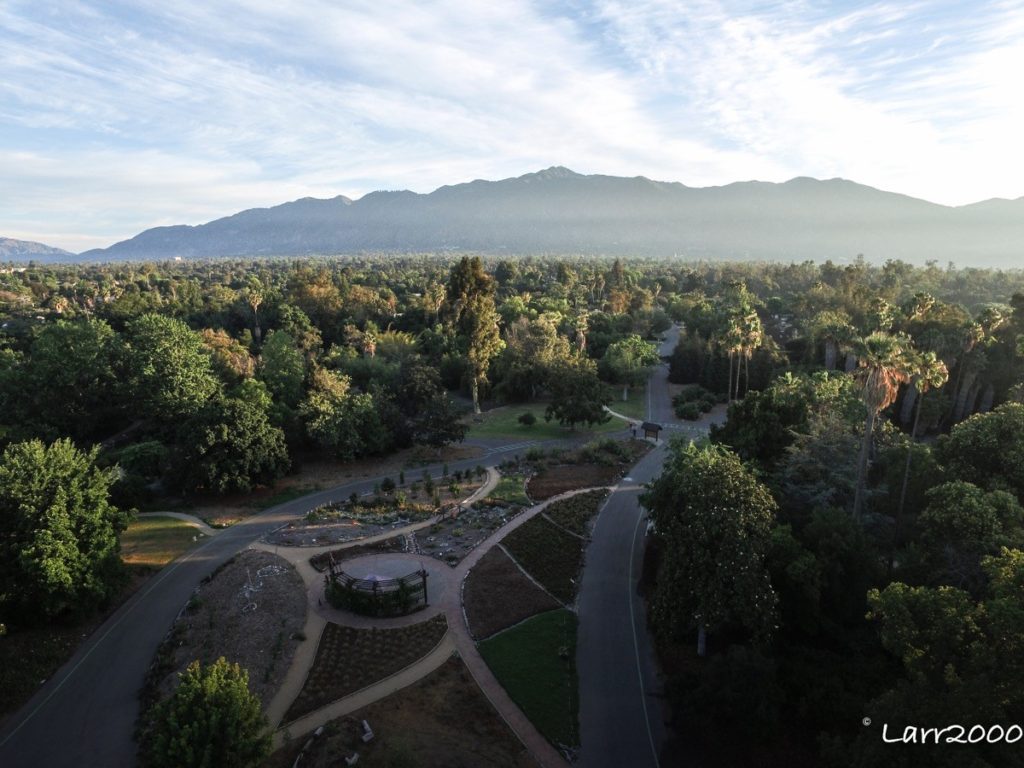
Rico Gagliano: So each layer of those things is helping to keep the water towards the ground, I guess?
Leigh Adams: …And protect the plants from evaporation and extreme heat. They also carry nutrients back and forth to one another in a micro-ecosystem.
Rico Gagliano: I have to say that I just got distracted because there was a peacock walking down the street behind you.
Leigh Adams: We have bird pressure [laughs]. That’s the actual term in landscaping.
Rico Gagliano: Meaning that there are a lot of birds around wrecking your work?
Leigh Adams: Yeah, these are not lightweight birds. These are 20-pound birds eating our food and landing on top of things.
Rico Gagliano: So, if I use some of your techniques in my backyard, I might actually do better than you because I don’t have peacocks ruining it.
Leigh Adams: Yes! You might do a whole lot better. My backyard looks fantastic all the time.
Rico Gagliano: Now I want to sample some of the fruit of this garden. Is it specifically kind of drought-resistant crops that you’re growing here?
Leigh Adams: Generally, yes. You’re standing underneath a passion fruit vine. It also provides the most delicious fruit and beautiful flowers.
Rico Gagliano: Is this a particularly drought-resistant plant?
Leigh Adams: Yes, it is.
Rico Gagliano: Can I try one?
Leigh Adams: These aren’t ripe. This is a public garden, so we do lose our ripe fruit that people are familiar with, and they are familiar with passion fruit.
Rico Gagliano: Yes, they are. This is a food segment, so I have to try something. What do you have?
Leigh Adams: Well, I have some surprises for you. Have you ever had a jujube?
Rico Gagliano: In a movie theater!
Leigh Adams: Yeah, this is a little bit different, but almost as sweet.
Rico Gagliano: Jujube is an actual fruit?
Leigh Adams: Yes, it is.
Rico Gagliano: It’s interesting because “jujube” is one of my favorite words in the world. People who know me will know that I’ll just randomly say that word because it’s fun. But I always thought that it was just a candy. So, it’s named after a fruit?
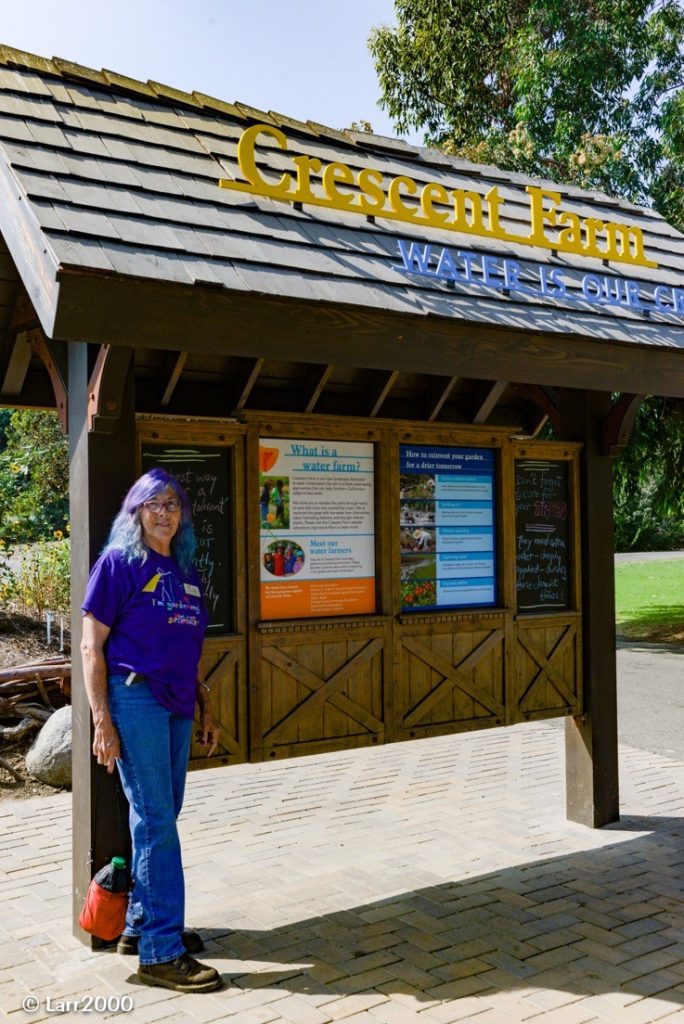
Leigh Adams: I picked some here, but I’d like you to see them on the tree because the profusion with which they grow is astonishing, once you see them and know that a tree can grow without being watered for years. Once it’s established, this is one of the lowest water-use trees that I could think of offhand.
Rico Gagliano: It’ll keep fruiting even though there’s no water?
Leigh Adams: Yes.
Rico Gagliano: How is that even possible?
Leigh Adams: By sending massive, long roots down into the ground. It will find water. It will find a leaky pipe or the neighbor’s air conditioning drip or something. It will find…
Rico Gagliano: Does that make for good jujubes, air conditioning-watered jujubes?
Leigh Adams: Actually, there is no transference of heavy metals, which is what’s in air conditioning water, into fruit. Trees take care of that for us.
Rico Gagliano: So I’m just going to take one. You’ve already plucked this from the tree. They look like dates, kind of.
Leigh Adams: They look like dates.
Rico Gagliano: OK, here we go. Oh, yeah. Oh, it’s very date-like. It’s really pleasant. Bot overly sweet, but still just sweet enough. The inside, actually, looks like a chewy almond. I could eat these all day long. By the way, does this only thrive in dry weather?
Leigh Adams: No, they can actually take water, as well.
Rico Gagliano: OK. So, having access to this tree is not an excuse to create a drought or live in a drought zone.
Leigh Adams: No, it isn’t. A reason to live in a dry area is cactus. And if you aren’t eating nopal cactus, you want to eat nopal cactus. Grilled nopal with a little bit of feta on it, maybe a slice of tomato, and a — oh, you have to see our homegrown corn! For making our own tortillas and posole!
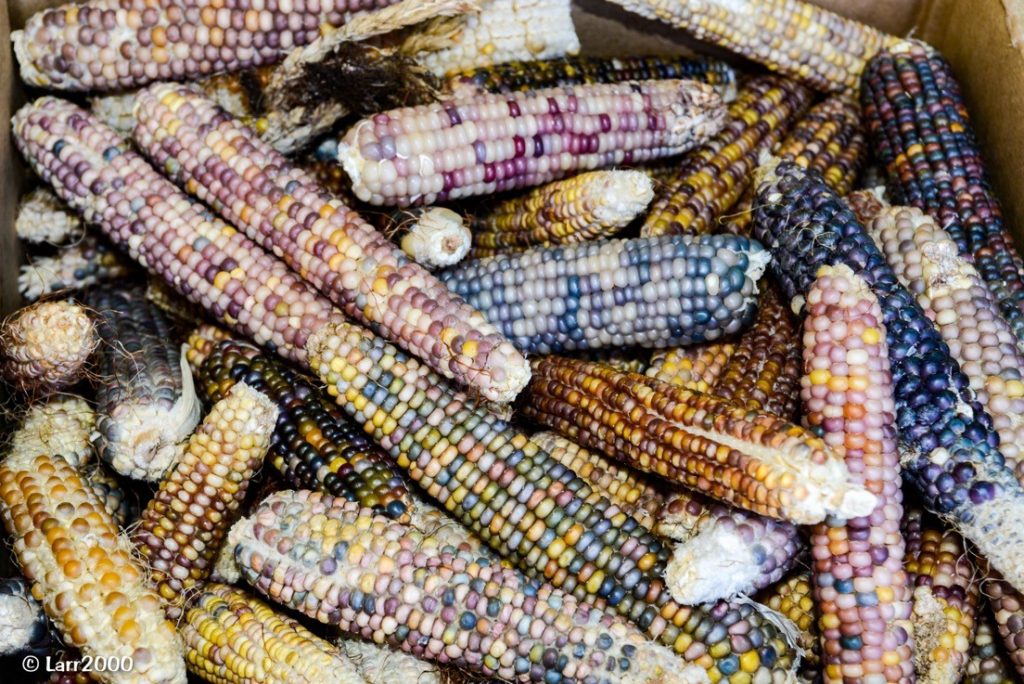
Rico Gagliano: Do you have a cafe where you’re serving this yet?
Leigh Adams: [Laughs.] My house.
